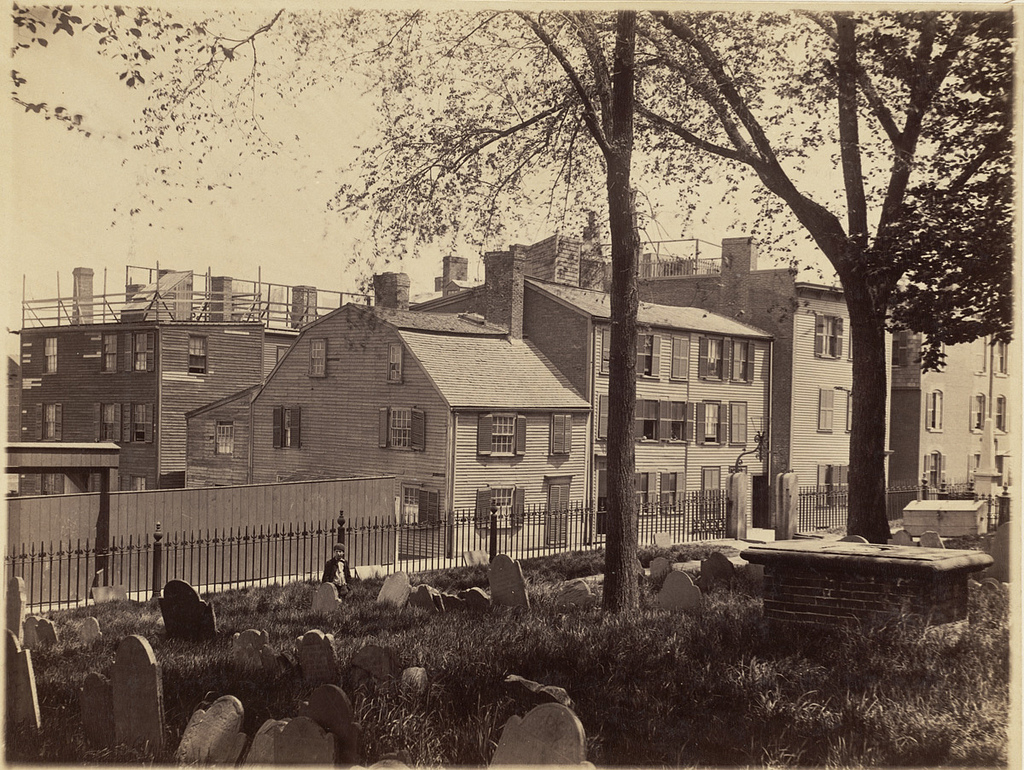In H.P. Lovecraft’s classic 1927 horror story Pickman’s Model, the sinister painter Charles Pickman brings one of his fans to his North End basement studio. The basement has an old well in the middle, which connects to a network of tunnels.
Pickman says: “Look here, do you know the whole North End once had a set of tunnels that kept certain people in touch with each other’s houses, and the burying ground, and the sea? Let them prosecute and persecute above ground – things went on every day that they couldn’t reach…”
Lovecraft wrote fantasy and horror, but he often incorporated real history into his stories. There actually were, and maybe still are, secret tunnels underneath the North End.
For example, in the 19th century workmen discovered that a house at 453 Commercial Street had a large stone arch in its cellar that connected to a subterranean tunnel. The tunnel was 14 feet wide, five feet high, and was made of imported bricks. It angled away from Commercial Street towards Salem Street. The tunnel had been sealed off, so no one knew where it ended.
The house at 453 Commercial was demolished in 1906, but who built the tunnel? The most popular theory claims that privateer Thomas Gruchy did.
Thomas Gruchy was a privateer in the early 1700s, raiding ships sailing from the Spanish colonies back to Europe. Gruchy grew rich from plunder and moved to Boston, where he consolidated his wealth by purchasing a large distillery, a mercantile warehouse, and several wharves. In 1745 he acquired the Salem Street mansion once owned by Governor Phipps and began to throw lavish parties. He quickly became a respectable member of society, and even joined the congregation of the Old North Church. Four plaster angels that he donated (stolen from a French ship and intended for a Canadian convent) still decorate the church today.
People at the time wondered about the source of his wealth, which seemed excessive even for a privateer, but it was a question left unanswered. At the height of his wealth and influence Gruchy vanished from Boston and never returned. His house and businesses were sold off to settle his debts.
Historians speculate that the tunnel was both the source of his wealth and the reason he fled town. Boston was under British control at the time, and Gruchy could have used the tunnel to smuggle goods from his wharves to his mansion without having to pay exorbitant British tariffs or taxes. Unfortunately such a large tunnel would have been impossible to hide forever, and once it was discovered Gruchy left to avoid imprisonment.
That might explain the Commercial Street tunnel, but what of the others? A writer in 1817 mentioned a tunnel under a house on Lynn Street, and the AIA Guide to Boston claims the cellar of a historic house on Salem Street has a bricked up archway in its cellar. The archway is said to lead into a tunnel that goes to Copp’s Hill Burial Ground.
A secret tunnel leading to an old cemetery? Maybe H.P. Lovecraft was on to something after all.

Leave a Reply
You must be logged in to post a comment.